計算機單機性能一直受到摩爾定律的約束,隨著移動互聯網的興趣,單機性能不足的瓶頸越來越明顯,制約著整個行業的發展。不過我們雖然不能無止境的縱向擴容系統,但是我們可以分布式、橫向的擴容系統,這聽起來非常的美好,不過也帶來了今天要說明的問題,分布式的節點越多,通信產生的成本就越大。
網絡傳輸帶寬變得越來越緊缺,我們服務器的標配上了 10Gbps 的網卡
HTTPx.x 時代 TCP/IP 協議通訊低效,我們即將用上 QUIC HTTP 3.0
同機器走 Socket 協議棧太慢,我們用起了 eBPF
....
現在我們的應用程序花在網絡通訊上的時間太多了,其中花在序列化上的時間也非常的多。我們和大家一樣,在內部微服務通訊序列化協議中,絕大的部分都是用 JSON。JSON 的好處很多,首先就是它對人非常友好,我們能直接讀懂它的含義,但是它也有著致命的缺點,那就是它序列化太慢、序列化以后的字符串太大了。
之前筆者做一個項目時,就遇到了一個選型的問題,我們有數億行數據需要緩存到 Redis 中,每行數據有數百個字段,如果用 Json 序列化存儲的話它的內存消耗是數 TB級別的(部署個集群再做個主從、多中心 需要成倍的內存、太貴了,用不起)。于是我們就在找有沒有除了 JSON 其它更好的序列化方式?
看看都有哪些
目前市面上序列化協議有很多比如 XML、JSON、Thrift、Kryo 等等,我們選取了在.NET 平臺上比較常用的序列化協議來做比較:
JSON:JSON 是一種輕量級的數據交換格式。采用完全獨立于編程語言的文本格式來存儲和表示數據。簡潔和清晰的層次結構使得 JSON 成為理想的數據交換語言。
Protobuf:Protocol Buffers 是一種語言無關、平臺無關、可擴展的序列化結構數據的方法,它可用于(數據)通信協議、數據存儲等,它類似 XML,但比它更小、更快、更簡單。
MessagePack:是一種高效的二進制序列化格式。它可以讓你像 JSON 一樣在多種語言之間交換數據。但它更快、更小。小的整數被編碼成一個字節,典型的短字符串除了字符串本身之外,只需要一個額外的字節。
MemoryPack:是 Yoshifumi Kawai 大佬專為 C#設計的一個高效的二進制序列化格式,它有著.NET 平臺很多新的特性,并且它是 Code First 開箱即用,非常簡單;同時它還有著非常好的性能。
我們選擇的都是.NET 平臺上比較常用的,特別是后面的三種都宣稱自己是非常小,非常快的,那么我們就來看看到底是誰最快,誰序列化后的結果最小。
準備工作
我們準備了一個 DemoClass 類,里面簡單的設置了幾個不同類型的屬性,然后依賴了一個子類數組。暫時忽略上面的一些頭標記。
[MemoryPackable]
[MessagePackObject]
[ProtoContract]
public?partial?class?DemoClass
{[Key(0)]?[ProtoMember(1)]?public?int?P1?{?get;?set;?}[Key(1)]?[ProtoMember(2)]?public?bool?P2?{?get;?set;?}[Key(2)]?[ProtoMember(3)]?public?string?P3?{?get;?set;?}?=?null!;[Key(3)]?[ProtoMember(4)]?public?double?P4?{?get;?set;?}[Key(4)]?[ProtoMember(5)]?public?long?P5?{?get;?set;?}[Key(5)]?[ProtoMember(6)]?public?DemoSubClass[]?Subs?{?get;?set;?}?=?null!;
}[MemoryPackable]
[MessagePackObject]
[ProtoContract]
public?partial?class?DemoSubClass
{[Key(0)]?[ProtoMember(1)]?public?int?P1?{?get;?set;?}[Key(1)]?[ProtoMember(2)]?public?bool?P2?{?get;?set;?}[Key(2)]?[ProtoMember(3)]?public?string?P3?{?get;?set;?}?=?null!;[Key(3)]?[ProtoMember(4)]?public?double?P4?{?get;?set;?}[Key(4)]?[ProtoMember(5)]?public?long?P5?{?get;?set;?}
}System.Text.Json
選用它的原因很簡單,這應該是.NET 目前最快的 JSON 序列化框架之一了,它的使用非常簡單,已經內置在.NET BCL 中,只需要引用System.Text.Json命名空間,訪問它的靜態方法即可完成序列化和反序列化。
using?System.Text.Json;var?obj?=?....;//?Serialize
var?json?=?JsonSerializer.Serialize(obj);//?Deserialize
var?newObj?=?JsonSerializer.Deserialize<T>(json)Google Protobuf
.NET 上最常用的一個 Protobuf 序列化框架,它其實是一個工具包,通過工具包+*.proto文件可以生成 GRPC Service 或者對應實體的序列化代碼,不過它使用起來有點麻煩。
使用它我們需要兩個 Nuget 包,如下所示:
<!--Google.Protobuf?序列化和反序列化幫助類-->
<PackageReference?Include="Google.Protobuf"?Version="3.21.9"?/><!--Grpc.Tools?用于生成protobuf的序列化反序列化類?和?GRPC服務-->
<PackageReference?Include="Grpc.Tools"?Version="2.50.0"><PrivateAssets>all</PrivateAssets><IncludeAssets>runtime;?build;?native;?contentfiles;?analyzers;?buildtransitive</IncludeAssets>
</PackageReference>由于它不能直接使用 C#對象,所以我們還需要創建一個*.proto文件,布局和上面的 C#類一致,加入了一個DemoClassArrayProto方便后面測試:
syntax="proto3";
option csharp_namespace="DemoClassProto";
package DemoClassProto;message DemoClassArrayProto
{repeated DemoClassProto DemoClass = 1;
}message DemoClassProto
{int32 P1=1;bool P2=2;string P3=3;double P4=4;int64 P5=5;repeated DemoSubClassProto Subs=6;
}message DemoSubClassProto
{int32 P1=1;bool P2=2;string P3=3;double P4=4;int64 P5=5;
}做完這一些后,還需要在項目文件中加入如下的配置,讓Grpc.Tools在編譯時生成對應的 C#類:
<ItemGroup><Protobuf?Include="*.proto"?GrpcServices="Server"?/>
</ItemGroup>然后 Build 當前項目的話就會在obj目錄生成 C#類: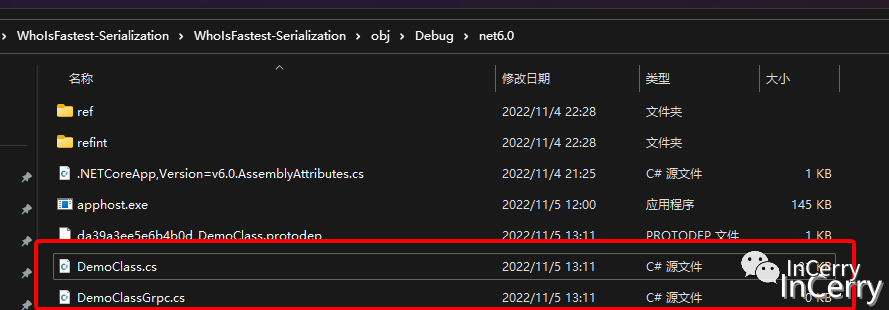
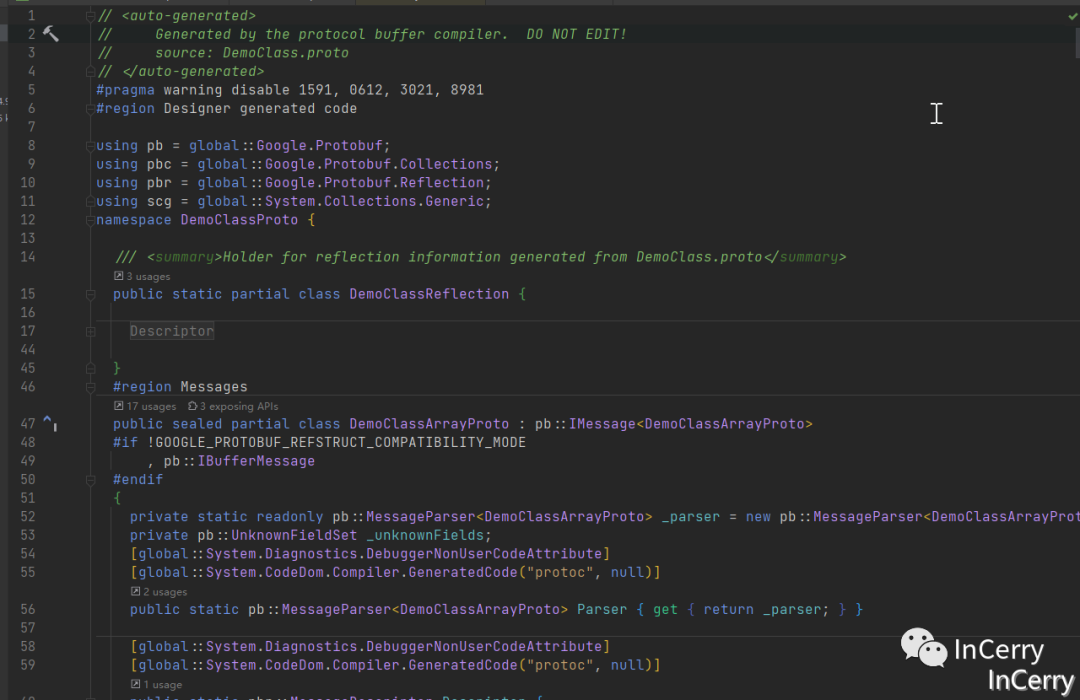
最后我們可以用下面的方法來實現序列化和反序列化,泛型類型T是需要繼承IMessage<T>從*.proto生成的實體(用起來還是挺麻煩的):
using?Google.Protobuf;//?Serialize
[MethodImpl(MethodImplOptions.AggressiveInlining)]
public?static?byte[]?GoogleProtobufSerialize<T>(T?origin)?where?T?:?IMessage<T>
{return?origin.ToByteArray();
}//?Deserialize
[MethodImpl(MethodImplOptions.AggressiveInlining)]
public?DemoClassArrayProto?GoogleProtobufDeserialize(byte[]?bytes)
{return?DemoClassArrayProto.Parser.ParseFrom(bytes);
}Protobuf.Net
那么在.NET 平臺 protobuf 有沒有更簡單的使用方式呢?答案當然是有的,我們只需要依賴下面的 Nuget 包:
<PackageReference?Include="protobuf-net"?Version="3.1.22"?/>然后給我們需要進行序列化的 C#類打上ProtoContract特性,另外將所需要序列化的屬性打上ProtoMember特性,如下所示:
[ProtoContract]
public?class?DemoClass
{[ProtoMember(1)]?public?int?P1?{?get;?set;?}[ProtoMember(2)]?public?bool?P2?{?get;?set;?}[ProtoMember(3)]?public?string?P3?{?get;?set;?}?=?null!;[ProtoMember(4)]?public?double?P4?{?get;?set;?}[ProtoMember(5)]?public?long?P5?{?get;?set;?}
}然后就可以直接使用框架提供的靜態類進行序列化和反序列化,遺憾的是它沒有提供直接返回byte[]的方法,不得不使用一個MemoryStrem:
using?ProtoBuf;//?Serialize
[MethodImpl(MethodImplOptions.AggressiveInlining)]
public?static?void?ProtoBufDotNet<T>(T?origin,?Stream?stream)
{Serializer.Serialize(stream,?origin);
}//?Deserialize
public?T?ProtobufDotNet(byte[]?bytes)
{using?var?stream?=?new?MemoryStream(bytes);return?Serializer.Deserialize<T>(stream);
}MessagePack
這里我們使用的是 Yoshifumi Kawai 實現的MessagePack-CSharp,同樣也是引入一個 Nuget 包:
<PackageReference?Include="MessagePack"?Version="2.4.35"?/>然后在類上只需要打一個MessagePackObject的特性,然后在需要序列化的屬性打上Key特性:
[MessagePackObject]
public?partial?class?DemoClass
{[Key(0)]?public?int?P1?{?get;?set;?}[Key(1)]?public?bool?P2?{?get;?set;?}[Key(2)]?public?string?P3?{?get;?set;?}?=?null!;[Key(3)]?public?double?P4?{?get;?set;?}[Key(4)]?public?long?P5?{?get;?set;?}
}使用起來也非常簡單,直接調用MessagePack提供的靜態類即可:
using?MessagePack;//?Serialize
[MethodImpl(MethodImplOptions.AggressiveInlining)]
public?static?byte[]?MessagePack<T>(T?origin)
{return?global::MessagePack.MessagePackSerializer.Serialize(origin);
}//?Deserialize
public?T?MessagePack<T>(byte[]?bytes)
{return?global::MessagePack.MessagePackSerializer.Deserialize<T>(bytes);
}另外它提供了 Lz4 算法的壓縮程序,我們只需要配置 Option,即可使用 Lz4 壓縮,壓縮有兩種方式,Lz4Block和Lz4BlockArray,我們試試:
public?static?readonly?MessagePackSerializerOptions?MpLz4BOptions?=???MessagePackSerializerOptions.Standard.WithCompression(MessagePackCompression.Lz4Block);//?Serialize
[MethodImpl(MethodImplOptions.AggressiveInlining)]
public?static?byte[]?MessagePackLz4Block<T>(T?origin)
{return?global::MessagePack.MessagePackSerializer.Serialize(origin,?MpLz4BOptions);
}//?Deserialize
public?T?MessagePackLz4Block<T>(byte[]?bytes)
{return?global::MessagePack.MessagePackSerializer.Deserialize<T>(bytes,?MpLz4BOptions);
}MemoryPack
這里也是 Yoshifumi Kawai 大佬實現的MemoryPack,同樣也是引入一個 Nuget 包,不過需要注意的是,目前需要安裝 VS 2022 17.3 以上版本和.NET7 SDK,因為MemoryPack代碼生成依賴了它:
<PackageReference?Include="MemoryPack"?Version="1.4.4"?/>使用起來應該是這幾個二進制序列化協議最簡單的了,只需要給對應的類加上partial關鍵字,另外打上MemoryPackable特性即可:
[MemoryPackable]
public?partial?class?DemoClass
{public?int?P1?{?get;?set;?}public?bool?P2?{?get;?set;?}public?string?P3?{?get;?set;?}?=?null!;public?double?P4?{?get;?set;?}public?long?P5?{?get;?set;?}
}序列化和反序列化也是調用靜態方法:
//?Serialize
[MethodImpl(MethodImplOptions.AggressiveInlining)]
public?static?byte[]?MemoryPack<T>(T?origin)
{return?global::MemoryPack.MemoryPackSerializer.Serialize(origin);
}//?Deserialize
public?T?MemoryPack<T>(byte[]?bytes)
{return?global::MemoryPack.MemoryPackSerializer.Deserialize<T>(bytes)!;
}它原生支持 Brotli 壓縮算法,使用如下所示:
//?Serialize
[MethodImpl(MethodImplOptions.AggressiveInlining)]
public?static?byte[]?MemoryPackBrotli<T>(T?origin)
{using?var?compressor?=?new?BrotliCompressor();global::MemoryPack.MemoryPackSerializer.Serialize(compressor,?origin);return?compressor.ToArray();
}//?Deserialize
public?T?MemoryPackBrotli<T>(byte[]?bytes)
{using?var?decompressor?=?new?BrotliDecompressor();var?decompressedBuffer?=?decompressor.Decompress(bytes);return?MemoryPackSerializer.Deserialize<T>(decompressedBuffer)!;
}跑個分吧
我使用BenchmarkDotNet構建了一個 10 萬個對象序列化和反序列化的測試,源碼在末尾的 Github 鏈接可見,比較了序列化、反序列化的性能,還有序列化以后占用的空間大小。
public?static?class?TestData
{//public?static?readonly?DemoClass[]?Origin?=?Enumerable.Range(0,?10000).Select(i?=>{return?new?DemoClass{P1?=?i,P2?=?i?%?2?==?0,P3?=?$"Hello?World?{i}",P4?=?i,P5?=?i,Subs?=?new?DemoSubClass[]{new()?{P1?=?i,?P2?=?i?%?2?==?0,?P3?=?$"Hello?World?{i}",?P4?=?i,?P5?=?i,},new()?{P1?=?i,?P2?=?i?%?2?==?0,?P3?=?$"Hello?World?{i}",?P4?=?i,?P5?=?i,},new()?{P1?=?i,?P2?=?i?%?2?==?0,?P3?=?$"Hello?World?{i}",?P4?=?i,?P5?=?i,},new()?{P1?=?i,?P2?=?i?%?2?==?0,?P3?=?$"Hello?World?{i}",?P4?=?i,?P5?=?i,},}};}).ToArray();public?static?readonly?DemoClassProto.DemoClassArrayProto?OriginProto;static?TestData(){OriginProto?=?new?DemoClassArrayProto();for?(int?i?=?0;?i?<?Origin.Length;?i++){OriginProto.DemoClass.Add(DemoClassProto.DemoClassProto.Parser.ParseJson(JsonSerializer.Serialize(Origin[i])));}}
}序列化
序列化的 Bemchmark 的結果如下所示:
從序列化速度來看MemoryPack遙遙領先,比 JSON 要快 88%,甚至比 Protobuf 快 15%。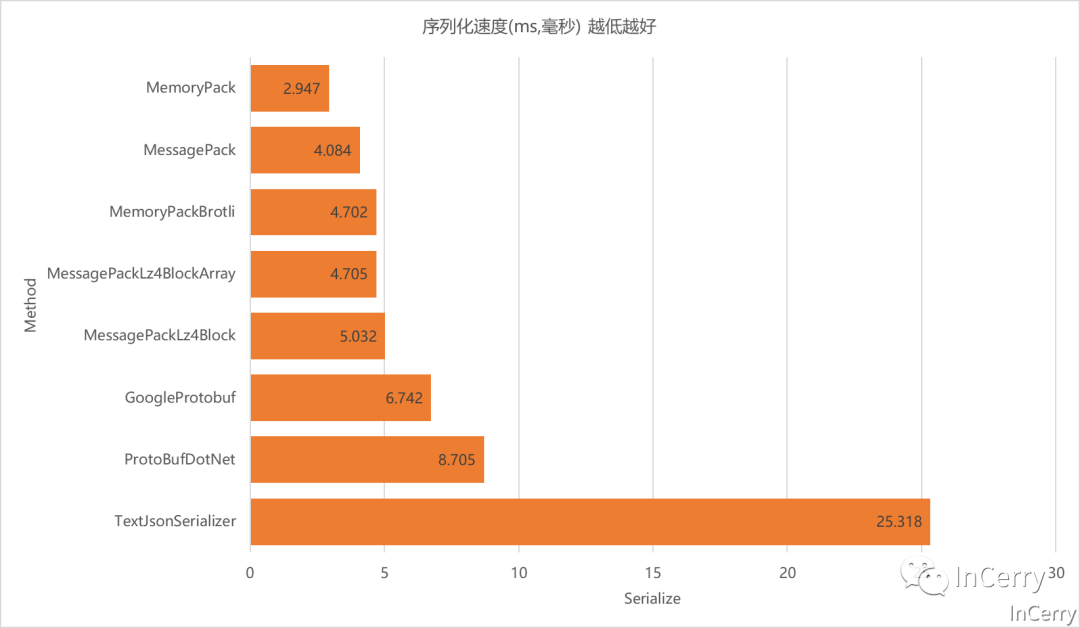
從序列化占用的內存來看,MemoryPackBrotli是王者,它比 JSON 占用少 98%,甚至比Protobuf占用少 25%。其中ProtoBufDotNet內存占用大主要還是吃了沒有byte[]返回方法的虧,只能先創建一個MemoryStream。
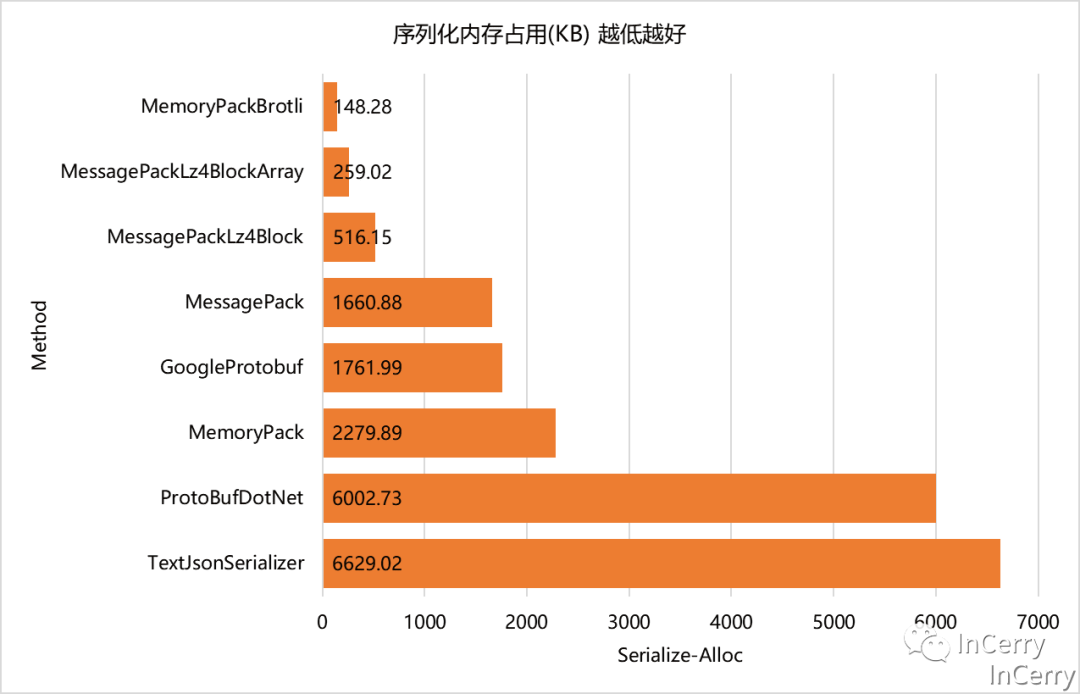
序列化結果大小
這里我們可以看到MemoryPackBrotli贏麻了,比不壓縮的MemoryPack和Protobuf有著 10 多倍的差異。
反序列化
反序列化的 Benchmark 結果如下所示,反序列化整體開銷是比序列化大的,畢竟需要創建大量的對象:
從反序列化的速度來看,不出意外MemoryPack還是遙遙領先,比 JSON 快 80%,比Protobuf快 14%。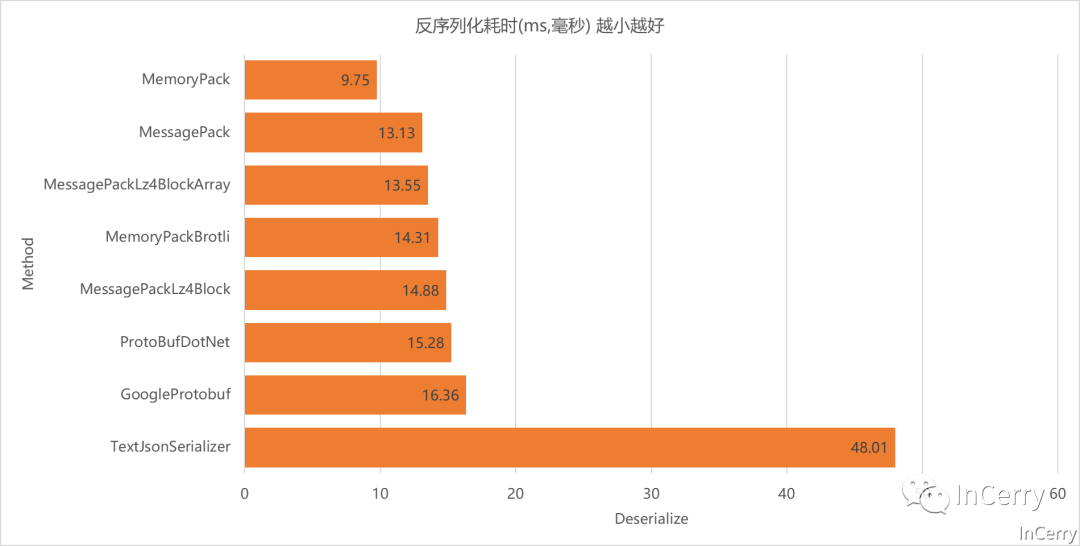
從內存占用來看ProtobufDotNet是最小的,這個結果聽讓人意外的,其余的都表現的差不多: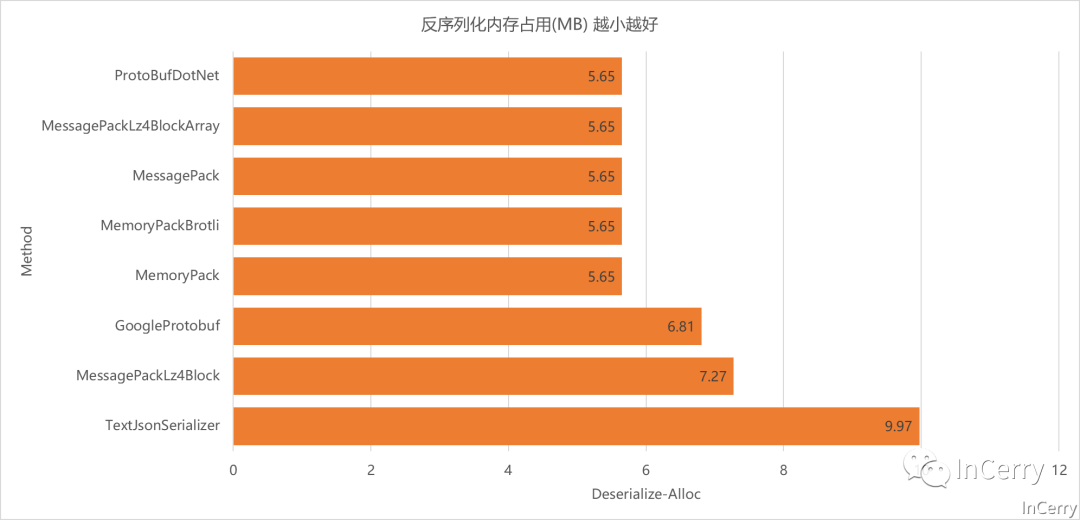
總結
總的相關數據如下表所示,原始數據可以在文末的 Github 項目地址獲取:
從圖表來看,如果要兼顧序列化后大小和性能的話我們應該要選擇MemoryPackBrotli,它序列化以后的結果最小,而且兼顧了性能:
不過由于MemoryPack目前需要.NET7 版本,所以現階段最穩妥的選擇還是使用MessagePack+Lz4壓縮算法,它有著不俗的性能表現和突出的序列化大小。
回到文首的技術選型問題,筆者那個項目最終選用的是Google Protobuf這個序列化協議和框架,因為當時考慮到需要和其它語言交互,然后也需要有較小空間占用,目前看已經占用了111GB的 Redis 空間占用。
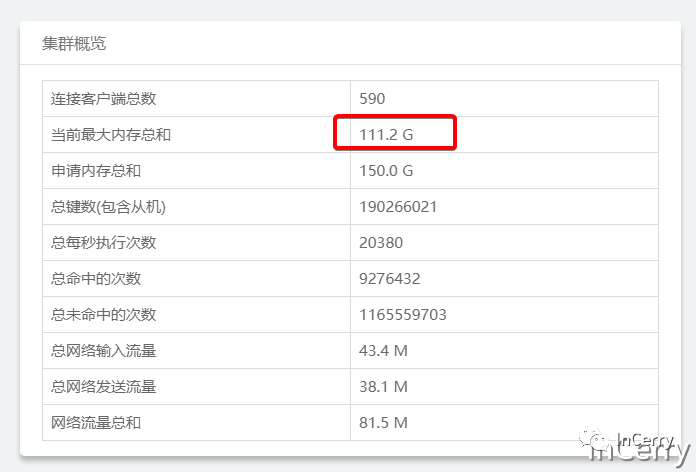
如果后續進一步增大,可以換成MessagePack+Lz4方式,應該還能節省95GB的左右空間。那可都是白花花的銀子。
當然其它協議也是可以進一步通過Gzip、Lz4、Brotli算法進行壓縮,不過鑒于時間和篇幅關系,沒有進一步做測試,有興趣的同學可以試試。
附錄
代碼鏈接: https://github.com/InCerryGit/WhoIsFastest-Serialization



)

:Realm授權)

![[LeetCode][Java] Unique Paths II](http://pic.xiahunao.cn/[LeetCode][Java] Unique Paths II)








的用法)


![[譯]關于NODE_ENV,哪些你應該了解](http://pic.xiahunao.cn/[譯]關于NODE_ENV,哪些你應該了解)